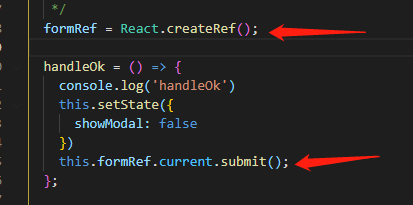Were talking about data in a file on an iSeries here using DB2.
File structure is as such:
Item Textline Text
12755 1 this item
12755 2 is no longer
12755 3 for sale
abc123 1 please use
abc123 2 another code
xyz987 1 obsolete
The result im trying to get is
Item Text
12755 this item is no longer for sale
abc123 please use another code
xyz987 obsolete
So it is grouped by Item code and the text lines are added up regardless of how many there are.
I tried it in query first by joining the file to itself 5 times (there can be as many as 5 text lines) but i could never get it to work.
I tried it in SQL but i cant get the commands im familair with to work correctly with text and im struggling on the criteria to add them together without duplicating the text lines up.
Anyone any idea's ?
My last resort is to extract this file 5 times over itself with each file just containing a different text line and then matching them all back together based on item and concatenating that way... but wow how messy that is :)
Please help :)
DB2 for i can do this.
Perhaps the most concise way is to use an often overlooked feature, that the other DB2 platforms do not have -- a type of recursive query known as a hierarchical query. Like many things, it's fairly simple once you understand it, but it deserves a bit of explaining to understand how it works.
A recursive or hierarchical query helps you connect one row to one or more others. In this case we are making a chain of one to one connections.
The aggregate SYS_CONNECT_BY_PATH function will concatenate strings along the path from a starting (or "root") row to the end (or "leaf") row.
Let's start by putting your sample data into a table.
declare global temporary table snippets
( item varchar(10)
, seq smallint
, words varchar(30)
);
insert into snippets
values
('12755', 1, 'this item')
,('12755', 2, 'is no longer')
,('12755', 3, 'for sale')
,('abc123', 1, 'please use')
,('abc123', 2, 'another code')
,('xyz987', 1, 'obsolete')
;
Let's look at the hierarchical query we will use as a first phase building block.
SELECT item
, seq
, CONNECT_BY_ISLEAF as flag
, SYS_CONNECT_BY_PATH(words, ' ') as phrase
FROM snippets
START WITH seq = 1
CONNECT BY PRIOR item = item and PRIOR (seq + 1) = seq
The CONNECT BY clause defines the join conditions from one row in the table to another.
The START WITH clause specifies which row(s) to begin joining from, the "root" row. So we are going to start with rows where seq=1, and join to the next seq value (seq+1). That row will join to the following seq value, and so on.
CONNECT_BY_ISLEAF will indicate when we are at the last row in the chain. You'll in a moment why I used it here.
Here are the results:
ITEM SEQ FLAG PHRASE
12755 1 0 this item
12755 2 0 this item is no longer
12755 3 1 this item is no longer for sale
abc123 1 0 please use
abc123 2 1 please use another code
xyz987 1 1 obsolete
Now all we need to do is put that in a common table expression,
from which we can take only the rows we want. The "leaf" rows at the end of the chain have the completed string, so those are the ones to pick.
with q as
(
SELECT item
, seq
, CONNECT_BY_ISLEAF as flag
, SYS_CONNECT_BY_PATH(words, ' ') as phrase
FROM snippets
START WITH seq = 1
CONNECT BY PRIOR item = item and PRIOR (seq + 1) = seq
)
SELECT item
, phrase
FROM q
WHERE flag = 1
ORDER BY item
;
Which gives us:
ITEM PHRASE
abc123 please use another code
xyz987 obsolete
12755 this item is no longer for sale
There you have it.
Folks on other DB2 platforms will have to find another solution, such as a regular recursive query in funkworm's comment above.
If you want to create a User-defined function that can do this sort of thing, here's one I wrote to accomplish an essentially identical task:
create function GetTextBlock(inItemNo decimal(13,0))
returns varchar(1200)
begin atomic
declare outstr varchar(1200) default '';
for list_comments as
select tltx60
from msytxl
where tlcono = 1
and tldivi = ''
and tltxid = inItemNo
order by tllino
do
set outstr = outstr || trim(tltx60) || ' ';
end for;
set outstr = rtrim(outstr);
return outstr;
end
go
Then you can use it in a SELECT statement like so:
Select ItemNo, GetTextBlock(ItemNo)
from ItemMaster
(This code was written for, and works on, DB2 for i V6R1)
V5R4
declare global temporary table qtemp.snippets
( item varchar(10)
, seq smallint
, words varchar(30)
);
insert into qtemp.snippets
values
('12755', 1, 'this item')
,('12755', 2, 'is no longer')
,('12755', 3, 'for sale')
,('abc123', 1, 'please use')
,('abc123', 2, 'another code')
,('xyz987', 1, 'obsolete')
;
with q(item, seq, words, phrase) as
(
SELECT s.item
, s.seq
, s.words
, s.words phrase
FROM qtemp.snippets s
where s.seq = 1
union all
SELECT s1.item
, s1.seq
, s1.words
, q.Phrase || ' ' || s1.words phrase
FROM qtemp.snippets s1
join q on s1.item = q.item
and s1.seq = q.seq +1
)
select q.item, q.phrase from q
join (
Select q.item, max(q.seq) maxseq from q
group by item
) q1 on q.item = q1.item and q.seq = q1.maxseq
DB2 for i does not have an aggregate function that could be used for this purpose nor does it support user defined aggregate functions.
The only options are a stored procedure or 'client' side aggregation.
@WarrenT -- after some 16+ years on the i, I thought I was one of those cats... but you have disturbingly proved me wrong. :) Great response on the SQL. And yes, I see a few opportunities to use it right away!!!
Unfortunately, I am limited to V5R4... will that work as a stored procedure call from, say a .NET web app?





